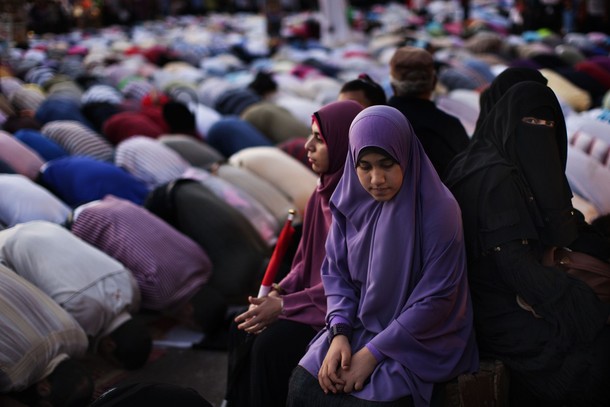
On June 13, 2012 a newly formed constituent assembly was announced. This signalled further disappointment for Egypt’s women, in that same old, now much told story of gender discrimination. The assembly, composed of one hundred members tasked with determining the content and wording of Egypt’s fundamental legal document, included only seven women. According to the 2006 Census, women make up 48% of Egypt’s population; 7% is far from a representative role in this process.
The original assembly announced in March this year was also marked by under-representation of women, with only six women in its ranks. It was eventually abandoned, in the face of controversy and protest, as Islamist parliamentary members dominated the committee, leaving many others with little or no representation. The second committee’s addition of one more woman is not much of an improvement.
The constitution-making process has become further complicated by recent political events, which have led to the dissolution of parliament and the issuance of an addendum to the existing Constitutional Declaration. These changes grant the Supreme Council of Armed Forced (SCAF) new powers, allowing them to intervene in the constitution-drafting process, and gives them the ability to dissolve the assembly, if it “encounters obstacles that prevent it completing its work” (Article 60B). According to the addendum SCAF now also has the power to demand a revision of the Constitution if any article conflicts ‘with the revolution’s goals and its main principles or …with any principle agreed upon in all of Egypt’s former constitutions’.
Under these circumstance, the question of women’s representation risks being side-lined in public debate, in favour of a discussion on SCAF’s use and abuse of power. However, Egypt’s women are being excluded from public life more than in other parts of North Africa. Women represent 24% of the current Tunisian constituent assembly body, while in Libya, they have been promised a representation of at least 10%.
Throughout these political developments, women’s groups have been focusing their attention on direct advocacy regarding the content of the constitution. To that effect, the Egyptian Feminist Union is launching a campaign which aims to directly address the composition of the constituent assembly. Additionally, the campaign asserts that the assembly is “legally bound to add several articles based on ratification of United Nations and International Treaties”.
Lisa Heintzbergen, of the Arab Alliance of Women, who conducted research for this campaign, notes that other Middle East and North Africa countries have pledged to include many of these articles in their constitutions. Rights being advocated for include: equality before the law; equality of education and fair wages, aiming to ensure social as well as legal equality within the constitutional text.
Organizations including Nazra and UN Women also have projects which focus on strengthening women’s political participation. These projects aim to ensure long-term participation of women in the public sphere, but do not take into account short term gains. Indeed, Mozn Hassan of Nazra notes that legal guarantees are just one aspect of women’s rights, highlighting the value of political participation in public life as well.
Within human rights organizations, there are finer points of discussion. Salma El-Naqqash at Nazra Institute for Feminist Studies notes that representation in number does not necessarily guarantee representation in voice. Having observed the previous manipulation of the women’s quota in favour of Mubarak’s National Democratic Party, she would prefer to see a smaller number of women representatives who she believes embody her ideals and aspirations as a modern Egyptian woman.
Indeed, if women are to represent their compatriots they must be able to speak to the complexity and variety of women’s opinions. The Cairo Institute for Human Rights Studies’ Mohamed Zahree points out that quality of that representation is key, stating that of the seven women in the constitutional committee, four are members of the Freedom and Justice Party and are “not able to uphold the cause of women’s rights”.
Yet, following the dissolution of parliament, it seems to have become apparent that women are not the only group lacking representation in the democratic process. Indeed, the issue of women’s exclusion does not seem to be a product of social or gender exclusion in particular. Instead, women seem to be just another group of victims in a bid for control by certain powerful players, at the expense of others.
The formation of Egypt’s constituent assembly can be seen as an illustration of the many groups vying for representation within Egypt’s new democracy. Yet, the struggle to include women representatives within the assembly is demonstrative of the traditional power struggles which continue to be played out in the country.
Women’s groups are continuing to fight another battle in a long war, but it is apparent that they are just one party that has found itself excluded, and their fight is one in which many others are now joining. Yet, care must be taken so that public debate on women’s issues is not lost, if SCAF attempts to gain a tighter hold on the Constitution-drafting process.
Catriona Knapman is a researcher and writer focusing on human rights, legal and social development issues. Her professional experience spans a number of international organisations and continents. She is currently based in Cairo. She also blogs at: writingonrights.wordpress.com.
Photo Credit: AP
Image: 610x_99.jpg
